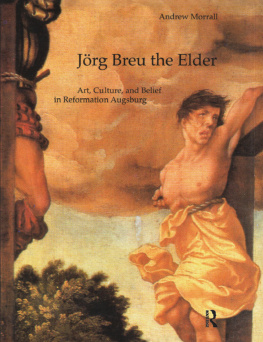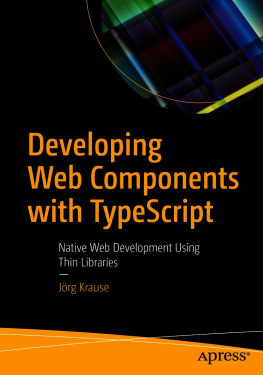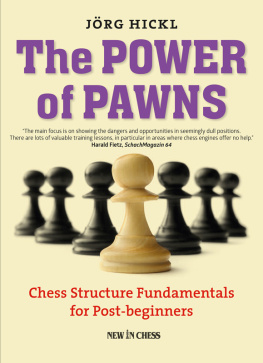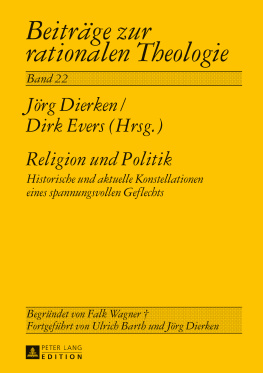Breu Jörg - Jorg Breu the Elder: art, culture, and belief in Reformation Augsburg
Here you can read online Breu Jörg - Jorg Breu the Elder: art, culture, and belief in Reformation Augsburg full text of the book (entire story) in english for free. Download pdf and epub, get meaning, cover and reviews about this ebook. City: Aldershot;Germany;Augsburg, year: 2002, publisher: Taylor and Francis;Ashgate, genre: Detective and thriller. Description of the work, (preface) as well as reviews are available. Best literature library LitArk.com created for fans of good reading and offers a wide selection of genres:
Romance novel
Science fiction
Adventure
Detective
Science
History
Home and family
Prose
Art
Politics
Computer
Non-fiction
Religion
Business
Children
Humor
Choose a favorite category and find really read worthwhile books. Enjoy immersion in the world of imagination, feel the emotions of the characters or learn something new for yourself, make an fascinating discovery.
- Book:Jorg Breu the Elder: art, culture, and belief in Reformation Augsburg
- Author:
- Publisher:Taylor and Francis;Ashgate
- Genre:
- Year:2002
- City:Aldershot;Germany;Augsburg
- Rating:5 / 5
- Favourites:Add to favourites
- Your mark:
- 100
- 1
- 2
- 3
- 4
- 5
Jorg Breu the Elder: art, culture, and belief in Reformation Augsburg: summary, description and annotation
We offer to read an annotation, description, summary or preface (depends on what the author of the book "Jorg Breu the Elder: art, culture, and belief in Reformation Augsburg" wrote himself). If you haven't found the necessary information about the book — write in the comments, we will try to find it.
Breu Jörg: author's other books
Who wrote Jorg Breu the Elder: art, culture, and belief in Reformation Augsburg? Find out the surname, the name of the author of the book and a list of all author's works by series.
Jorg Breu the Elder: art, culture, and belief in Reformation Augsburg — read online for free the complete book (whole text) full work
Below is the text of the book, divided by pages. System saving the place of the last page read, allows you to conveniently read the book "Jorg Breu the Elder: art, culture, and belief in Reformation Augsburg" online for free, without having to search again every time where you left off. Put a bookmark, and you can go to the page where you finished reading at any time.
Font size:
Interval:
Bookmark:

JRG BREU THE ELDER
Jrg Breu the Elder is published in the series
HISTORIES OF VISION
edited by Caroline van Eck, Vrije Universiteit, Amsterdam
Images are cultural constructions with their own poetics and histories, but so is vision itself. The aim of this series is to reconstruct these histories. It will be devoted to the study of works of art considered as ways of seeing, viewing practices, and the various codifications of visual perception connected with the arts and artistic theories through the ages.
FORTHCOMING, IN THE SAME SERIES
Defining Devotions
Nineteenth-Century Explorations of Later Buddhist Art in South Asia
Janice Leoshko
A Landscape of Grace and Terror: Modernism and the Maeght Foundation
Jan Birksted
Andrew Morrall
Jrg Breu the Elder
Art, culture and belief in Reformation Augsburg

First published 2001 by Ashgate Publishing
Published 2016 by Routledge
2 Park Square, Milton Park, Abingdon, Oxon OX14 4RN
711 Third Avenue, New York, NY 10017, USA
Routledge is an imprint of the Taylor & Francis Group, an informa business
Copyright Andrew Morrall, 2001
The author has asserted his right under the Copyright, Designs and Patents Act, 1988, to be identified as the author of this work.
All rights reserved. No part of this book may be reprinted or reproduced or utilised in any form or by any electronic, mechanical, or other means, now known or hereafter invented, including photocopying and recording, or in any information storage or retrieval system, without permission in writing from the publishers.
Notice:
Product or corporate names may be trademarks or registered trademarks, and are used only for identification and explanation without intent to infringe.
British Library Cataloguing-in-Publication data
Morrall, Andrew
Jrg Breu the Elder : art, culture and belief in Reformation Augsburg. (Histories of vision)
1. Breu, Jrg 2. Art 16th century Germany 3. Reformation and art Germany
I. Title
709.2
Library of Congress Cataloging-in-Publication data
Morrall, Andrew
Jrg Breu the Elder : art, culture, and belief in Reformation Augsburg / Andrew Morrall.
p. cm. (Histories of vision)
Includes bibliographical references and index.
ISBN 1-84014-608-7
1. Art, German Germany Augsburg. 2. Art, Renaissance Germany Augsburg. 3. Breu, Jrg, ca. 14801537 Criticism and interpretation. 4. Reformation and art Germany Augsburg. I. Title. II. Series.
N6886.A9 M67 2001
759.3dc21
2001022061
ISBN 13: 978-1-84014-608-0 (hbk)
Typeset in Palatino by Manton Typesetters, Louth, Lincolnshire, UK
Contents
Many people have assisted in the course of writing this book. I would like to acknowledge my indebtedness to my supervisors of the thesis from which this study grew: to Professor Michael Kauffmann for his wise guidance and encouragement at every stage of preparation; and to Dr Jean Michel Massing, for his continuous interest and support. I have benefited greatly from their combined knowledge, expertise, and example. Dr Gode Krmer, of the Stdtische Kunstsammlungen, Augsburg, read an early draft of my manuscript and has responded to my attempt to write on Breu with unfailing kindness, placing his own recent discoveries at my disposal, and generously providing photographs. I am greatly indebted to Dr Caroline van Eck, series editor of Histories of Vision, and to Pamela Edwardes and Ellen Keeling of Ashgate Publishing, for their editorial skill and patience in seeing this book through to completion.
Thanks are due to the staffs of the British Library, the Courtauld Institute Library and especially the Warburg Institute Library of London University, where much of the work was done, and which provided such a congenial and stimulating place of study. A London University travel grant enabled me to carry out research in Germany, which was made the more pleasurable by the friendly assistance of the staffs of the Augsburg Stadtarchiv and Staats- und Stadtbibliothek, of the Munich Staatsbibliothek, and of the Zentralinstitut fr Kunstgeschichte over a number of summer campaigns. I am grateful also to the staff of the numerous museums who allowed me access to the works themselves and offered of their knowledge and expertise; in particular: Holm Bevers, Linda Cannon, Anneli Carrenbock, Renate Eikelmann, Thomas Hardy, Timothy Husband, Harald Marx and Jesse McNab. I wish to thank the museums and other owners, who have given permission for their works to be reproduced here, and those who have supplied photographs; in particular Pfarrer Josef Baier of the Katholisches Pfarramt, Aufhausen, Charlotte Ziegler of Stift Zwettl and Maria Prller of Stift Melk, for the loan of colour transparencies. The sources of photographs are individually acknowledged in the List of Illustrations. I am most grateful to the Samuel H. Kress Foundation and to my own institution, the Bard Graduate Center, New York, for providing financial assistance towards the cost of reproductions and colour plates.
Among the many people who have supplied references, discussed ideas, and given practical assistance, are: Jane Bridgeman, Heinz Dormeier, Nicholas Eastaugh, David Ekserdjian, Tilman Falk, John Fludd, Anka Heimann, Daniel Hess, Jeremy Howard, Elizabeth McGrath, Michael Michael, Antje Schmitt, Larry Silver, Alistair Smith, Patrick Sweeney, and Paul Taylor. My particular thanks are due to Herman and Nancy Kohlmeyer, for their support, practical and moral, and to Marianne Voss and Albert Bote for their unforgettable hospitality. My parents, Dr Eric John and Ursula Morrall, provided vital assistance with points of translation and transcription. To them I owe a debt of gratitude that runs deeper and extends over a far longer period than the writing of this study. Finally, I owe infinite thanks to my wife, Sassy, for her continuous love and support, and to my daughters, Rachel and Imogen, who have put up with me throughout with characteristic generosity and humour.
AM
For my Parents
Jrg Breus life and career were co-extensive with the great era of German Renaissance painting. He belonged to the generation of artists, born in the 1470s, that included Drer, Cranach, Grnewald, Altdorfer, and in his own city of Augsburg, Hans Burgkmair the Elder. Within the space of that single generation, the craft of painting was brought to new levels of accomplishment, its range of subject matter extended and its status among the sister arts significantly raised. The character of Breus art and career was moulded by this context. His art may be counted as a defining part of the Augsburg school. His late style, in particular, is an important example of early German classicism and a conduit by which Italianate conventions entered into the German artistic tradition. Breu also possesses a position of singular historical interest. His career spans the dramatic years of the Reformation in Augsburg, when the city was riven with social and religious tensions, rioting and iconoclastic outbursts. Uniquely for a German artist, Breu left a record of his reactions to these events in a chronicle he wrote between 1512 and his death in 1537. In the course of this it is possible to trace the artists conversion to the Protestant cause. The chronicle offers the opportunity, rare at this date, to penetrate the social and religious world of a German artist, and to a considerable extent, to set his work beside and within his life. It is the study of the artist within the context of two broad and related historical problems the early reception of Italian art in Germany and the effects of the Reformation upon the nature and practice of art that constitutes the subject of this book.
Font size:
Interval:
Bookmark:
Similar books «Jorg Breu the Elder: art, culture, and belief in Reformation Augsburg»
Look at similar books to Jorg Breu the Elder: art, culture, and belief in Reformation Augsburg. We have selected literature similar in name and meaning in the hope of providing readers with more options to find new, interesting, not yet read works.
Discussion, reviews of the book Jorg Breu the Elder: art, culture, and belief in Reformation Augsburg and just readers' own opinions. Leave your comments, write what you think about the work, its meaning or the main characters. Specify what exactly you liked and what you didn't like, and why you think so.












